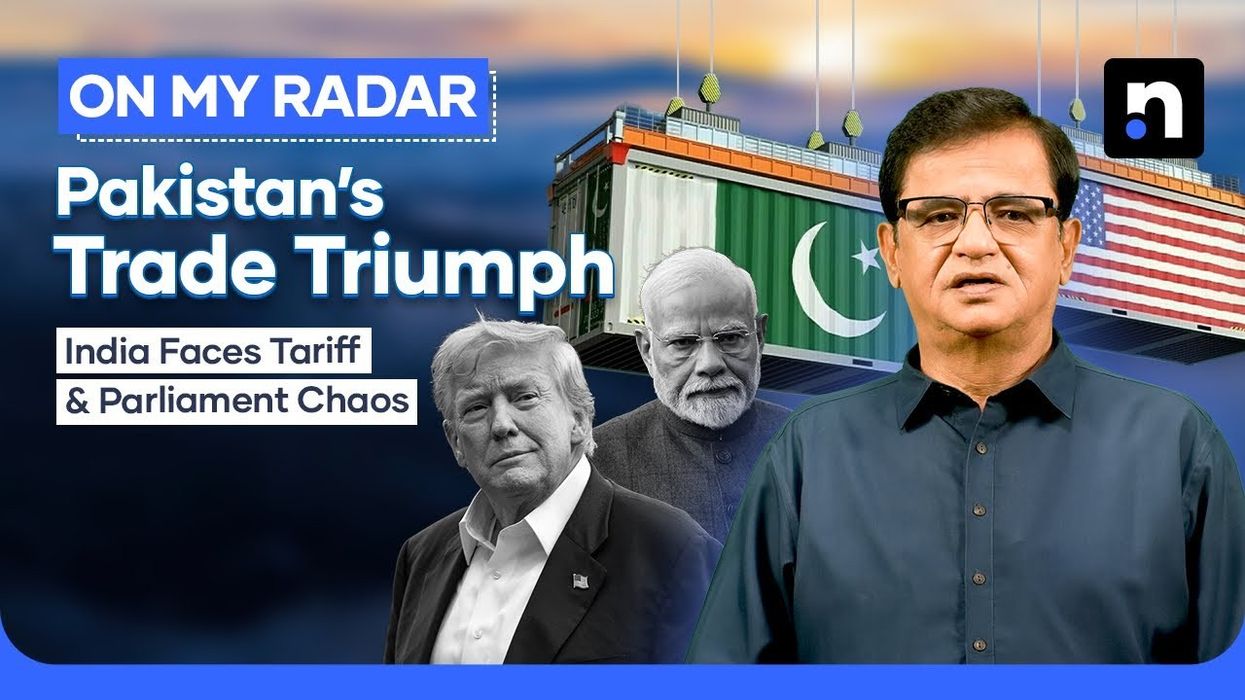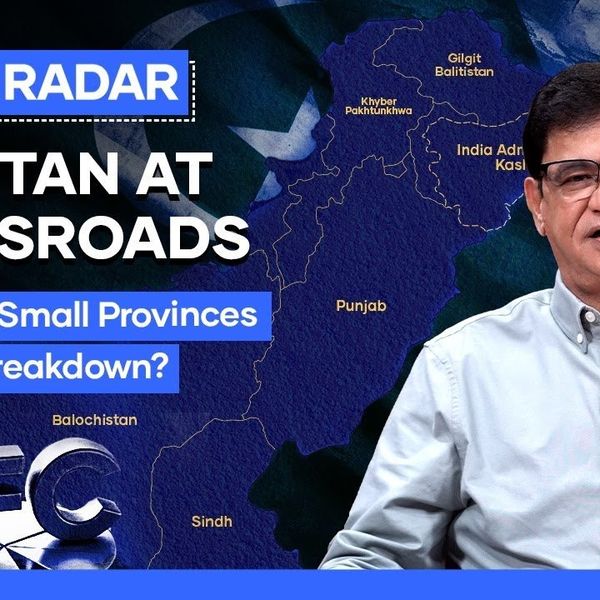Pakistan rises as India reels in shifting South Asia power play
As Islamabad strengthens global ties, New Delhi faces mounting pressure at home and abroad amid political unrest and diplomatic strain
News Desk
The News Desk provides timely and factual coverage of national and international events, with an emphasis on accuracy and clarity.
South Asia has witnessed a stunning transformation in the past 48 hours. With Pakistan’s assertive response to the May conflict with India -- including the downing of multiple Indian fighter jets -- Islamabad has emerged with renewed diplomatic and strategic momentum.
Pakistan’s rising global profile stands in sharp contrast to India’s current challenges. As Islamabad leverages recent events to strengthen international ties, New Delhi is under fire at home and abroad, struggling to defend its narrative amid political turbulence and diplomatic setbacks.
In the latest episode of On My Radar, Kamran Khan discussed this dramatic shift. He noted how Pakistan’s military success, particularly the downing of six Indian aircraft - including Rafale, Mirage, and MiG-29 fighters - left the Modi government politically paralyzed, unable to convene parliament for three months. When the Lok Sabha session finally held, the silence broke into uproar.
The opposition unleashed a barrage of criticism over intelligence failures in Pahalgam and military setbacks - particularly the Rafale debacle - while the ruling BJP offered little in response.
Pakistan turns military gains into diplomatic leverage
As India grappled with damage control, Pakistan was quietly racking up strategic wins. Following its military success, Islamabad saw an unexpected diplomatic breakthrough with Washington. In a major trade relief, U.S. President Donald Trump reduced the proposed tariff on Pakistani exports to 19% - down from 29% - putting Pakistan in a stronger trade position than several regional rivals. Indian exports now face a 25% tariff, while Bangladesh, Sri Lanka, Taiwan, and Vietnam are subject to 20%. Pakistan’s lower rate has tilted the trade balance in its favor.
Significantly, Pakistan was included in a special category of President Trump’s executive order - marked by the White House as “still under negotiation.” This indicates potential for even deeper tariff concessions. The development coincides with a newly signed strategic and economic partnership between Pakistan and the United States ushering in broader cooperation across trade, investment and market access.
The agreement aims to boost two-way trade, attract U.S. capital into Pakistan, and grant Pakistani products better entry into American markets, giving Pakistan a competitive edge over long-standing regional exporters.
The United States is already Pakistan’s largest export destination, accounting for nearly 20% of its exports. According to the central bank, Pakistan’s exports to the U.S. grew by 7% last fiscal year, generating a $3 billion trade surplus, primarily driven by textile goods.
Now, with potential reductions in Chinese textile imports, Pakistan’s ability to fill the supply gap becomes a pressing question for its industry.
Trump signals deeper economic alliance with Islamabad
Beyond favorable tariffs, Islamabad is enjoying something rarer: political goodwill from Washington. The Trump administration has publicly embraced Pakistan as a preferred trading partner, an elevated status not afforded to many in the region.
At the same time, Trump delivered a scathing rebuke of India’s economy on Truth Social, calling it “dead” and declaring, “India and Russia can drag their dead economies down together - I don’t care.” The statement only intensified criticism from the Indian opposition, which accused the Modi government of isolating India diplomatically.
Tensions escalated further when Trump revealed plans for the U.S. and Pakistan to jointly develop major oil reserves. “We are currently selecting the company that will lead this partnership,” he posted, raising eyebrows in New Delhi - particularly when he added that Pakistan might one day export oil to India.
Prime Minister Shehbaz Sharif welcomed Trump’s remarks and thanked him for his leadership, even as Indian opposition parties were tearing into the BJP government on the Parliament floor.
Analysts believe this policy shift - along with the trade concessions - was heavily influenced by a key meeting between President Trump and Pakistan’s Army Chief, Field Marshal Asim Munir. Described as unprecedented in tone and timing, the meeting has proven pivotal in reshaping Washington’s strategic posture toward Islamabad. Yet it has also sparked serious questions about how this new alignment could reshape the region in the long term.
Meanwhile, Pakistan may be on the brink of a major economic opportunity beneath the surface - literally. With renewed global interest and trade tailwinds, Pakistan is also preparing to explore untapped natural resources. Estimates suggest the country holds up to $6 trillion worth of unexploited mineral wealth, including rare earth elements, gold, and copper.
In just two days, the regional equation has flipped. Pakistan is enjoying a rare moment of strategic and economic ascendancy, while India’s narrative of dominance is beginning to unravel. The balance of power in South Asia is shifting - perhaps permanently. The game may already be changing. The only question now is: how fast?











Comments
See what people are discussing